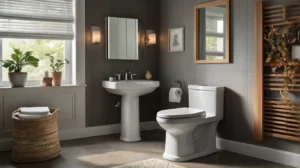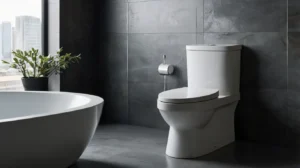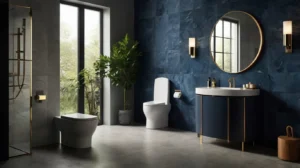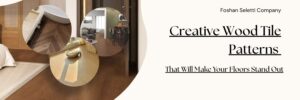Selecting the right toilet bowl impacts your daily comfort and bathroom functionality. This guide breaks down essential factors to help you make an informed decision for your home.
• Toilet types: Round, Elongated, or Compact Elongated
• Height options: Standard (14-16″) or Comfort (17-19″)
• Water efficiency: Look for WaterSense label (1.28 GPF)
• Key considerations: Space, comfort, and flushing power
Let’s explore each crucial aspect to help you find your ideal toilet bowl.
A well-chosen toilet bowl combines comfort, efficiency, and proper sizing for your space.
What Type of Toilet Bowl Shape Fits Your Space?
As a professional installer, I’ve seen firsthand how toilet bowl shape can make or break a bathroom’s functionality. Let me guide you through selecting the perfect bowl shape for your space.
Choosing between round and elongated bowls isn’t just about aesthetics – it’s about maximizing your bathroom’s potential. Round bowls, typically measuring 16.5 inches from the mounting holes to the front, are perfect for compact bathrooms where every inch counts. These space-saving options maintain excellent flushing performance while fitting comfortably in tight spaces.
Elongated bowls extend about 18.5 inches and offer enhanced comfort through their oval shape. I particularly recommend these for master bathrooms or spaces where comfort takes priority over spatial constraints. The extra two inches make a noticeable difference in user experience.
For those caught between space limitations and comfort preferences, compact elongated bowls offer an innovative solution. These models maintain the comfortable seating of elongated bowls while matching the footprint of round fixtures – truly the best of both worlds.
The right bowl shape can maximize both bathroom space and user comfort.
Let’s break down the key considerations:
| Bowl Shape | Space Required | Best For |
|---|---|---|
| Round | 16.5 inches | Small bathrooms, powder rooms |
| Elongated | 18.5 inches | Master baths, comfort priority |
| Compact Elongated | 16.5 inches | Balance of space & comfort |
In smaller bathrooms, I’ve found that round bowls leave more space for door clearance and general movement. They’re particularly suitable for powder rooms or secondary bathrooms where space is at a premium. For families with young children, round bowls often provide a more comfortable fit for little ones.
Elongated bowls shine in master bathrooms where space isn’t a constraint. The extra room offers superior comfort for adults and better support for those with mobility challenges. The oval shape also creates a more modern aesthetic that many homeowners prefer.
Compact elongated designs represent the latest innovation in toilet technology. These clever designs compress the elongated bowl’s comfort into a round bowl’s footprint, making them ideal for bathroom renovations where you want to upgrade comfort without changing the space requirements.
what type of toilet bowl shape fits your space?

Which Toilet Height Works Best for Your Needs?
Having installed countless toilets throughout my career, I can tell you that height matters more than most people realize. The right toilet height can transform your bathroom experience from awkward to absolutely comfortable.
Standard height toilets, measuring 14-16 inches from floor to seat, have been the go-to choice for generations. They’re particularly suitable for shorter adults and families with children, as the lower height allows for natural positioning. Comfort height toilets, also known as ADA-compliant toilets, measure 17-19 inches and offer significant benefits for specific users.
Let’s examine the key differences:
| Feature | Standard Height | Comfort Height |
|---|---|---|
| Floor to Seat Height | 14-16 inches | 17-19 inches |
| Ideal User Height | 5’4″ and under | 5’5″ and taller |
| Best For | Children, shorter adults | Elderly, tall adults, mobility issues |
In my professional experience, comfort height toilets excel in situations involving elderly family members or those with mobility challenges. The extra inches make standing up and sitting down significantly easier, reducing strain on knees and backs. I’ve had numerous clients express relief after switching to these taller models.
However, standard height toilets remain the better choice for households with young children or shorter adults. They allow for a more natural posture during use, which some health experts suggest may be beneficial for digestive health.
Proper toilet height selection ensures comfortable daily use and improved accessibility.
Here’s a pro tip: before making your final decision, try sitting on display models at your local showroom. Yes, it might feel a bit awkward, but it’s the best way to determine which height works for your body type. For multi-generational households, I often recommend comfort height toilets in the main bathroom while keeping standard height models in children’s bathrooms.
The perfect toilet height depends entirely on who’ll be using it most frequently. Consider your household’s specific needs – there’s no one-size-fits-all solution. Your comfort is paramount, and this decision will affect your daily routine for years to come.

How Do Different Flushing Systems Compare?
In my years of toilet installation and maintenance, I’ve seen the dramatic evolution of flushing systems. Let me break down the three main types you’ll encounter in today’s market, each with its own unique advantages.
Gravity-fed systems remain the most common choice, using water weight and siphon action to clear the bowl. These reliable workhorses operate quietly and require minimal maintenance. Plus, their simpler mechanism means fewer parts that could potentially fail.
| Flushing System | Water Usage | Noise Level | Maintenance |
|---|---|---|---|
| Gravity-Fed | 1.28-1.6 GPF | Low | Minimal |
| Pressure-Assisted | 1.0-1.6 GPF | High | Moderate |
| Dual-Flush | 0.8/1.6 GPF | Low | Low |
Pressure-assisted systems pack an extra punch, using compressed air to force water into the bowl. I particularly recommend these for commercial settings or large households. They’re practically clog-proof, though their powerful flush comes with a notably louder operation. These systems consistently meet strict efficiency standards while maintaining superior bowl cleaning performance.
Dual-flush technology offers the best of both worlds – a light flush for liquid waste (typically 0.8 gallons) and a full flush for solid waste (1.6 gallons). My environmentally conscious clients love this option for its water-saving potential without compromising performance.
The right flushing system balances water efficiency with reliable performance.
Here’s a pro tip: consider your water pressure before making a decision. Gravity-fed systems work best with normal to high water pressure, while pressure-assisted models can compensate for lower pressure situations. For homes with water pressure below 25 PSI, I always suggest installing a pressure-assisted system to ensure proper bowl clearing.
Noise sensitivity matters too – if your toilet sits near bedrooms, you might want to skip the pressure-assisted options. Their powerful flush can be startling, especially during nighttime use. Gravity-fed or dual-flush systems offer much quieter operation.
Maintenance requirements vary significantly between systems. Gravity-fed toilets usually need just basic care, while pressure-assisted models may require professional service if issues arise. The extra power comes with extra responsibility, as they say in the plumbing world!

Why Should You Consider Water Efficiency?
As a plumbing professional focused on sustainability, I’ve calculated significant savings for countless homeowners through water-efficient toilets. The numbers speak for themselves – replacing an old toilet with a WaterSense model can save the average family nearly 13,000 gallons of water annually.
Let’s look at the concrete benefits of water-efficient toilets:
| Toilet Type | Water Usage (GPF) | Annual Water Usage* | Estimated Annual Cost |
|---|---|---|---|
| Pre-1980s | 5.0+ | 27,375 gallons | $165 |
| 1990s Standard | 3.5 | 19,162 gallons | $115 |
| WaterSense Certified | 1.28 | 7,008 gallons | $42 |
*Based on average 4-person household
I always tell my clients – older toilets are literally flushing money down the drain. Modern WaterSense-labeled toilets use just 1.28 gallons per flush or less, compared to older models that guzzle 3.5 to 7 gallons. That’s a dramatic improvement in efficiency without sacrificing performance.
But here’s what really impresses my budget-conscious clients: a WaterSense toilet can cut your water bill by $110 or more annually. In areas with higher water rates, the savings can be even more substantial. The best part? These toilets pay for themselves through water savings, typically within 2-3 years.
Water-efficient toilets provide significant cost savings and environmental benefits.
I’ve noticed a common concern among shoppers – they worry efficient toilets might not perform as well. Let me put those fears to rest. Today’s water-efficient models actually outperform many older toilets, thanks to refined bowl design and improved flushing technology. They’ve been rigorously tested to handle all waste types effectively while using less water.
Here’s a pro tip: look for the WaterSense label. These models are independently certified to meet strict efficiency and performance standards. They must clear waste completely and provide adequate bowl cleaning using no more than 1.28 gallons per flush.
Considering environmental impact, each WaterSense toilet prevents about 4,000 gallons of water waste every year compared to standard 1.6-gallon models. For families looking to reduce their carbon footprint while saving money, this upgrade offers an ideal solution.

How Do Design Elements Impact Your Choice?
After focusing on the practical aspects, let’s talk about style – because your toilet doesn’t need to look like, well, just a toilet. As a design consultant, I’ve helped countless homeowners create bathrooms that blend function with aesthetics.
The first major design decision revolves around choosing between one-piece and two-piece toilets. One-piece designs offer a sleek, modern look with no gap between the tank and bowl, making them easier to clean. Two-piece toilets, while more traditional, provide more flexibility in terms of repairs and typically cost less.
| Design Element | One-Piece | Two-Piece |
|---|---|---|
| Price Range | $200-$800+ | $100-$500 |
| Cleaning Ease | Excellent | Good |
| Style Profile | Modern/Contemporary | Traditional/Versatile |
Color choices have evolved far beyond the basic white. Today’s options include subtle beiges, bold blacks, and even custom colors to match your décor. However, I always advise my clients to consider resale value – neutral colors tend to have broader appeal.
Style compatibility matters immensely in creating a cohesive bathroom design. A Victorian-style bathroom might benefit from a toilet with more ornate details, while a minimalist space calls for clean lines and simple shapes.
The right design elements can complement your bathroom’s style while providing desired functionality.
Here’s an insider tip: consider the toilet’s footprint and visual weight in your space. A bulky design can overwhelm a small bathroom, while a compact model might look lost in a larger space. I often recommend skirted toilets (those with concealed trapways) for a cleaner look that’s also easier to maintain.
Don’t overlook small design details like the flush lever finish or seat style. These elements might seem minor, but they contribute significantly to the overall aesthetic. For a truly coordinated look, match these fixtures to your faucets and other bathroom hardware.
Remember, your toilet will likely remain in place for a decade or more, so choosing a timeless design that works with your bathroom’s style is crucial. The good news? Modern toilets prove that practical pieces can indeed be stylish.

Conclusions
Choosing the perfect toilet bowl involves carefully considering shape, height, flushing system, water efficiency, and design elements. By evaluating these factors against your specific needs and bathroom constraints, you can select a toilet that provides optimal comfort, performance, and value for years to come.




